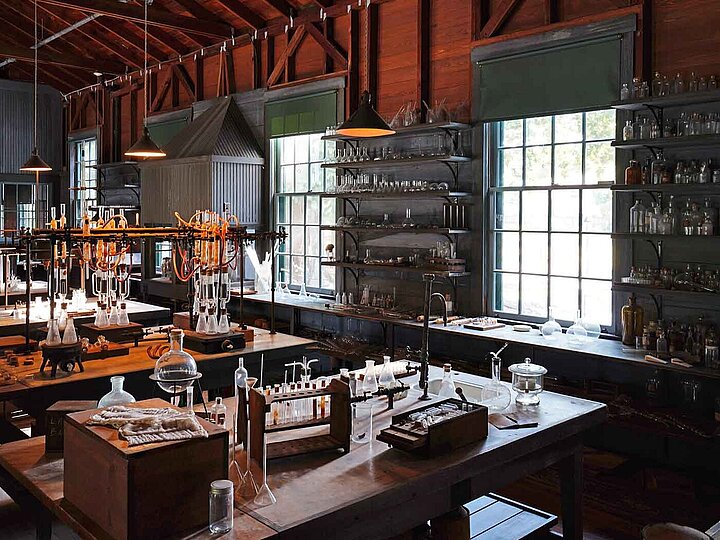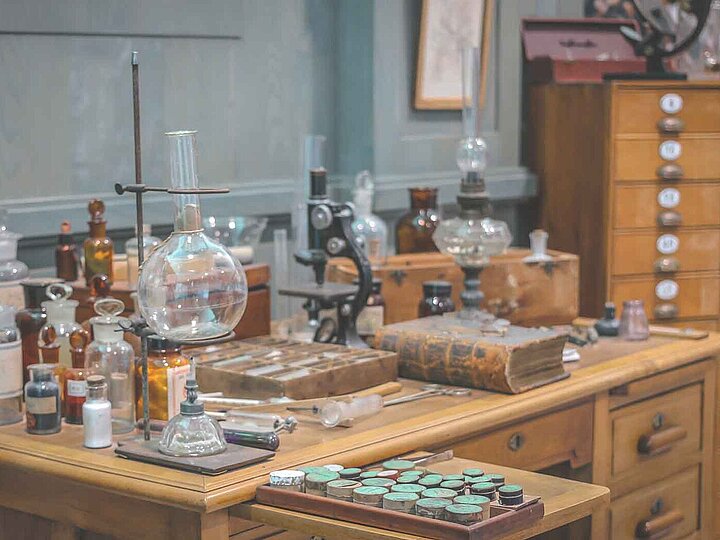The pioneers of elemental analysis - a glimpse into the digital future

The famous chemist and scientist Justus von Liebig takes us on a journey through the development of elemental analysis and meets our Managing Director for an imaginary coffee.
After my last journey through time, I informed myself about the development of industrial analysis (see part 2 of this series). Now I am interested in what the future of elemental analysis could look like. Therefore, I spoke to Albrecht Sieper, Managing Director of Elementar Analysensysteme GmbH, to get some current insights.
But first, please allow me to briefly introduce myself: My name is Justus von Liebig. I was born in 1803 and worked as a professor of chemistry in Giessen from 1824 to 1852, before moving to Munich, where I set up my own institute and lived until my death in 1873 at the age of 70. Throughout my life as a researcher, my heart beat for elemental analysis.

I am proud to say that my “kali-apparat”, or five-bulb apparatus, revolutionized elemental analysis after 1830. It made it possible to determine carbon and hydrogen in organic compounds quickly and routinely. Of course, the progress of organic elemental analysis was by no means over with the invention of the five-bulb apparatus – on the contrary! In modern chemistry laboratories, my invention has long since disappeared. Instead, there are now instruments that can conduct these analyses a lot faster and more accurately.
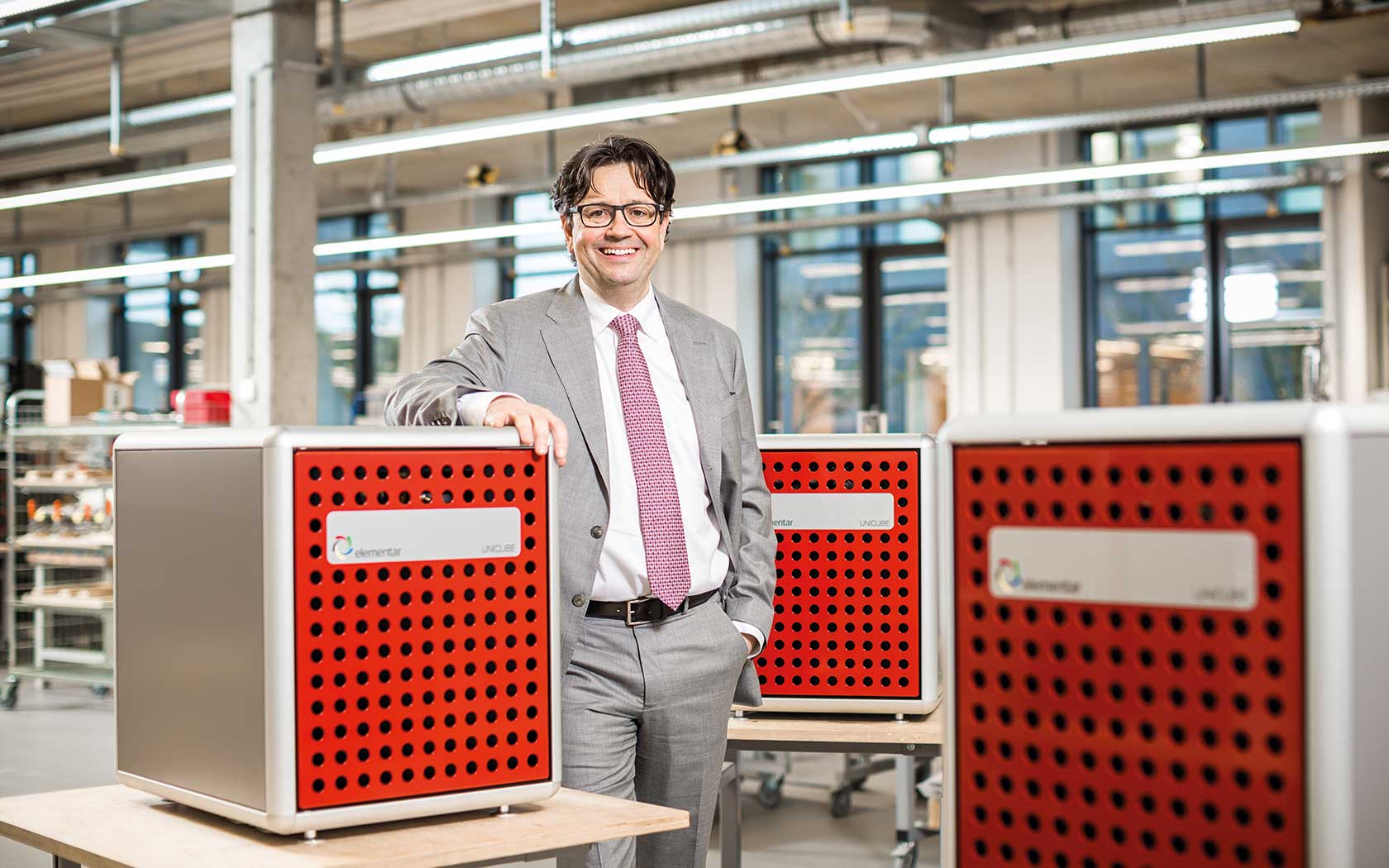
Elementar has already made a major contribution to the development of elemental analysis. But can a company that has been shaping elemental analysis for more than 125 years still create something new in its field and continue to be innovative? Albrecht Sieper says: „We not only can – in fact we have to. The fire that always drives us to try new things and follow new paths certainly burned within the founders of the company. Just look at the groundbreaking technical developments in the early days of Heraeus. Another example is the dynamic and continued development of elemental analyzers since WWII – especially in the last 30 years. Why do we still see ourselves as pioneers after 125 years? Because three core characteristics of pioneers have characterized our work from the very beginning: Creativity, initiative and assertiveness. We are also best equipped in terms of technology and continue to exploit new applications. We see a great deal of potential there.“
„We enjoy the well-conceived experiment.“
Albrecht Sieper, Managing Director Elementar Analysensysteme GmbH
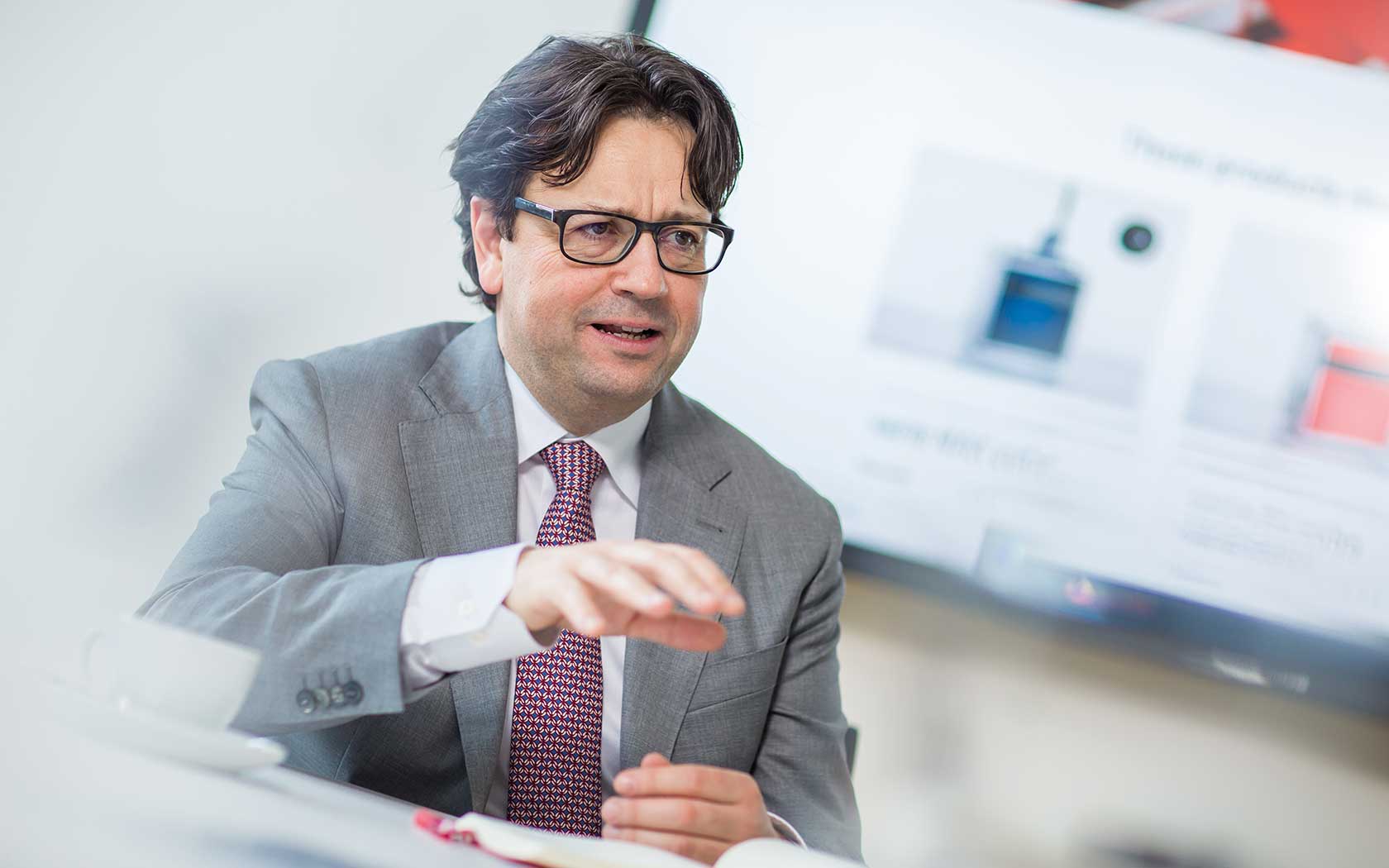
That sounds exciting. So far, I've been focused on the technology itself. Now I want to dive deeper into the applications that elemental analysis is used for and which have the biggest potential for growth. Albrecht Sieper says. „Instrumental analysis and in particular elemental analysis are closely linked to solutions for current and future human problems, including the protection of our food resources on a healthy and sustainable basis, given the steady growth of the world’s population (see the blog article „The future of food is green“). We must maintain and reestablish advantageous climatological conditions so that our planet remains habitable. We must safeguard natural resources and the basics of life, such as soil fertility, clean air and water, and the provision of raw materials for industrial manufacturing. We need to improve the status of our health as well as to secure energy and ensure an optimal energy mix. Social trends strongly influenced the development of elemental analysis in the past and continue to be the drivers of progress of this technology.“
I am very impressed by how elemental analysis has been continuously refined over the past decades and the areas in which it is now used. To ensure that the innovation pipeline at Elementar is always well-filled, research and development has always been of paramount importance to the company. One out of four employees works in this area. I am of course very pleased about this; there are certainly many clever chemists involved in the development. I also learned that Elementar is working closely with universities, research institutes and start-ups to take elemental analysis to the next level of evolution. This makes me optimistic, because I am sure that the future of elemental analysis is in good hands.
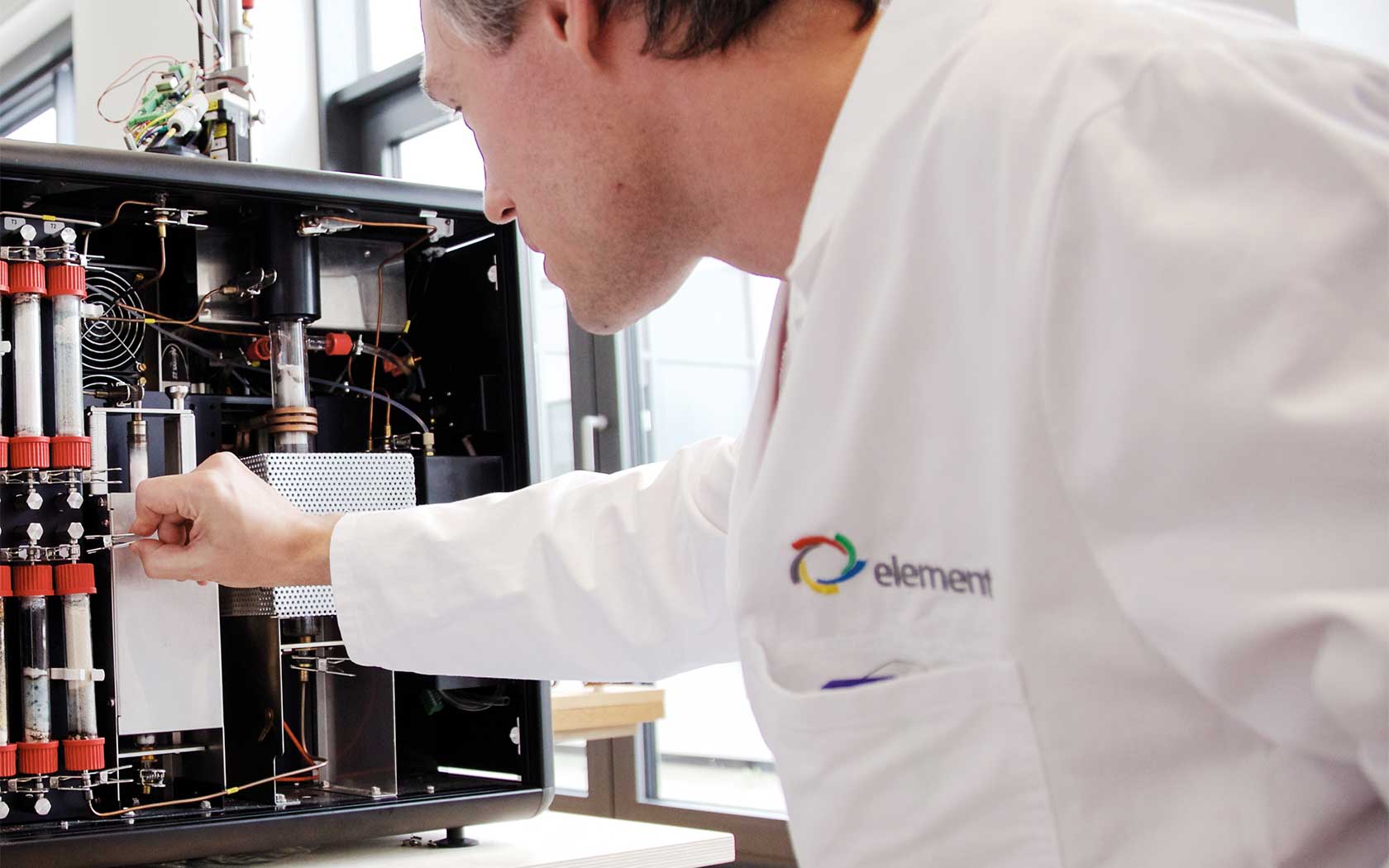
And then Albrecht Sieper suddenly uses two terms that were completely unknown in my days, but that are key to progress nowadays: “We have considered digitalization from the beginning. At the end of the 1990s, we were the first to integrate the PC into analytical technology. We are currently using artificial intelligence to depict new software functions that have previously never existed. We also have had outstanding experience with our online demos, enabling us to display the handling and operation of our instruments to our customers around the world. We understand digitalization as a long-term project that has already reached a high level with us.”
That sounds very exciting. Then all that remains is for me to say: "Thank you Mr. Sieper for the delicious coffee." I'm going to find out more about AI and digitalization. After all, you have to move with the times, otherwise you'll miss out on the future.
You want to know more about the history of elemental analysis?
Our book "125 Years of Instrumental Elemental Analysis - A success story" offers you deep insights into the development of elemental analysis from the very first beginning up to latest trends nowadays. Which pioneers have laid the foundation for elemental analysis with their innovative ideas and research? How has elemental analysis developed from the early stage to an industrial produced technology? What is the technological platform that the method is based on and which applications can be covered? Which role have we as Elementar played in the development of elemental analysis? All these questions are getting answered in the book. Enjoy reading.
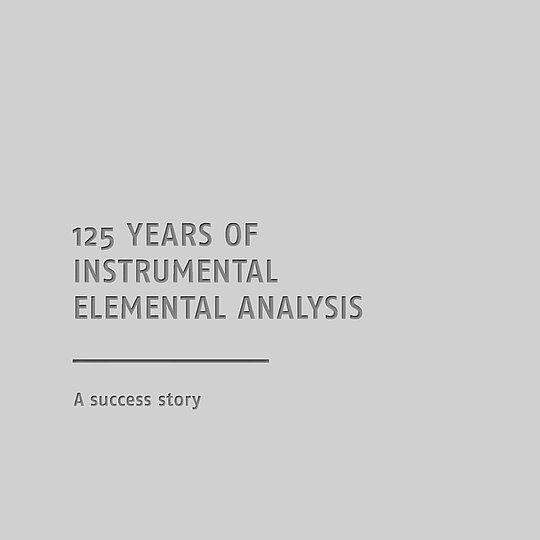
DOWNLOAD YOUR COPY
Fill in the form to receive your download link per e-mail.
Your contractual consideration for the free provision of the download is the subscription to our personalized newsletter. By clicking on the “download now” button, you therefore declare your acceptance of the receipt of personalized newsletters by e-mail by Elementar India Pvt Limited and its group companies as well as the evaluation of your user behavior in this regard and - if available - the merging of this data with your data in our customer database.
In order to receive newsletters from our group companies it is necessary to transfer your above-mentioned personal data to these companies. The data transfer is contractually required.
You are aware that the subscription to our personalized newsletter represents the contractual consideration that you provide for the free provision of the download. You can unsubscribe from the newsletter at any time with effect for the future. You can object to the future use of your data for advertising purposes at any time. For further information, please refer to our privacy policy.
Do not miss any new articles
NEWSLETTER
We will constantly publish new blog articles. Register for our newsletter to stay up-to-date and get informed about latest blog articles, news and trends.

